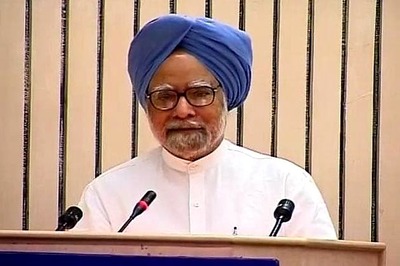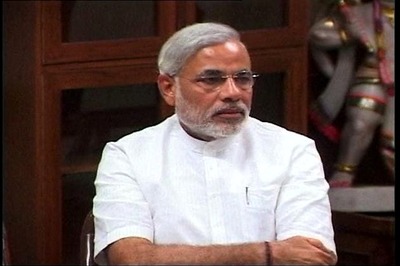
views
Not many would like to be in the shoes of finance minister Nirmala Sitharaman this week. The second-term NDA government is slated to present its maiden Budget on Friday and all eyes will be on the measures Sitharaman announces to tackle the visible stress afflicting the Indian economy.
GDP growth has been faltering (it was at 20-quarter low in the March quarter), questions are being raised on the reported growth numbers under this government’s first term, jobs have dried up and a truant monsoon is making life rather tough for farmers.
Though Sitharaman is widely expected to announce measures to boost economic activity and generate growth, her hands may be tied as the fiscal situation is far from perfect. Some analysts are, in fact, saying that even sticking to numbers on earnings, expenditure and investment this government had put out in the Interim Budget for 2019-20 may be a challenge.
Given this challenging scenario, therefore, it may be even tougher for Sitharaman to honour the lofty commitments this government made in its election manifesto. The manifesto had promised things like Rs 100 lakh crore investment in infrastructure sector in the next five years, doubling farmers’ income by 2022, a whopping Rs 25 lakh crore investment in what the manifesto called the “agri-rural” sector besides other schemes such as a pension plan for small and medium farmers.
Then, the manifesto also spoke of devising a roadmap for making India a $5 trillion economy by 2025. It remains to be seen if Sitharaman has money in the till for pushing any of these schemes in her first year as Finance Minister.
Not only has economic growth been faltering, Sitharaman is also faced with twin issues of declining revenues and rising expenditure. And the commitment of the NDA I government to keep the fiscal deficit at 3.4% of GDP.
On the one hand, she is expected to boost government expenditure so that economic activity is increased. On the other, the FM has to stick to the increasingly difficult path of fiscal consolidation amid dwindling revenues.
As for manifesto promises, take the example of the infrastructure sector. Of the Rs 100 lakh crore capital investment promised by 2024, a commitment of investing about Rs 20 lakh crore should ideally be made in this Budget.
Ratings agency CARE Ratings has said in a note that it expects infrastructure allocation in the Budget to stay at the figure proposed in the Interim Budget – at Rs 5 lakh crore or just a fourth of the average annual investment needed by the government to fulfil its election promise.
CARE Ratings’ analysts have further said that “the formulation of the budget will be challenged by the actual fiscal outcomes for FY19 where revenue fell short of the revised estimates put out earlier. This will make it more challenging to even retain the Interim Budget numbers as it implies higher growth in revenue to justify the expenditure that was targeted.”
Basically, the NDA I government was being a tad over optimistic on earnings and had possibly therefore made proposals for spending in the Interim Budget which may be tough to stick to.
D K Srivastava, Chief Economic Advisor at EY, has said in a report that the government estimated a growth in net tax revenues at 29.5% (comparing actual numbers in 2018-19 and implied growth rates given in the Interim Budget) in 2019-20.
“This is much higher than the annual growth rates observed in recent years. The second number pertains to revenue expenditure. Here, the implied growth in FY20 (Interim Budget Estimates) is 21.9% relative to 6.9% in FY19. This also is not in alignment with the revenue expenditure growth rates in recent years. Consequently, Centre’s net tax revenues and revenue expenditure estimates for FY20 may have to be revised downwards. “
But even while the government may revise the revenue expenditure downwards (from what was proposed in the Interim Budget), the commitment to support famers, for example, through the PM-Kisan Samman Nidhi and other schemes may have to be kept.
“This may require downward adjustments in other components of revenue expenditure including subsidies which may be rolled over or shifted to some public sector entity like FCI,” Srivastava said.
That the government’s revenue position is stretched is obvious and the Bimal Jalan committee formed to look into the possible transfer of surplus funds from the RBI to the government’s coffers has offered another setback.
Not only will the decision now happen post-Budget, the amount recommended by the committee may be too inconsequential to help the government in containing fiscal deficit in any meaningful manner.
So given the myriad fiscal constraints the FM faces, perhaps she should listen to some advice from economists and analysts who are asking her to be a bit lenient with the fiscal deficit target and instead focus on stimulating the economy through increased government spending.
The Federation of Indian Chambers of Commerce and Industry (FICCI) is batting for a stimulus package to exporters in the form of a tax concession for export-oriented manufacturing. Others have sought a fiscal stimulus of 0.5% of GDP or more to boost economic activity.
(The author is a senior journalist. Views are personal)




















Comments
0 comment